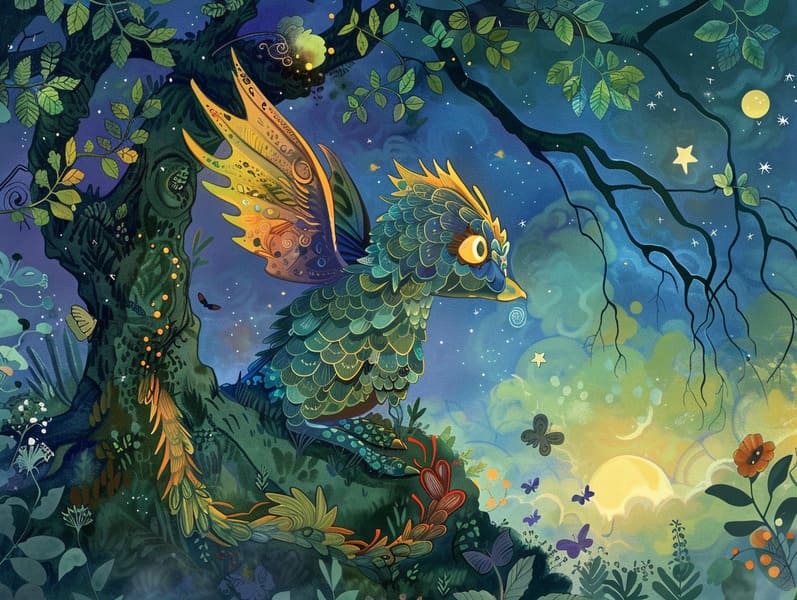The Evolution of Ancient Fairy Tales and the Everlasting Loveliness.
The Evolution of Ancient Fairy Tales and the Everlasting Loveliness.
Blog Article

Best fairy tales have timeless appeal. These narratives have been narrated from one generation to the next far before they were ever transcribed. They originated from a variety of cultures, including Asian traditions. They were initially transmitted among mature audiences, often carrying themes and messages pertaining to the societal norms and beliefs of the time.
The renowned Brothers Grimm, Jacob and Wilhelm, were among the first to gather many of these beloved tales. Their compilation, "Grimm's Children's Stories," included narratives like "Cinderella," "The Bread Crumb Trail," and "Schneewittchen," which have since become mainstays in the world of timeless fairy tales. Similarly, the Danish author's fantastical fairy tales, such as "The Little Mermaid," and "The Little Duckling," have captured hearts worldwide, establishing their place in the pantheon of classic fairy tales.
Despite their historical roots, classic fairy tales remain as significant as ever, especially as kids' bedtime tales. These enchanting tales are now available in multiple formats, including vividly illustrated books, charming animations, and digital fairy tales.
Their enduring popularity can be credited to several captivating elements:
Ethical Lessons: Traditional fairy tales often offer important moral lessons. Fairy tales like "The Shepherd Boy and the Wolf" teach the benefit of integrity, while "The Tortoise and the Hare" demonstrate the virtues of steadfastness and humility. These narratives offer children clear distinctions between correct and incorrect, shaping their moral compass in a gentle yet significant way.
Kindness and Comprehension: Ancient fairy tales frequently illustrate individuals facing challenges and struggles, inspiring listeners to comprehend with their struggles and back their triumphs. For instance, "Beauty's Beast" conveys the virtue of looking beyond appearances to realize the inner core of a character, strengthening insight and comprehension.
Cultural Understanding: Many timeless fairy tales are steeped in the cultural contexts from which they arose. Engaging with these stories can provide illuminating insights into different beliefs, nurturing a sense of global awareness and respect.
Fantasy and Imagination: The fanciful elements in fairy tales—spells and potions—trigger children’s dreaming abilities. These narratives carry readers to fantastical realms, engendering innovative thinking and a sense of magic that remains a lifetime.
Classic fairy tales are not only fascinating but also didactic. They act as magical tools in cultivating various intellectual and emotional capacities in children. When ancient fairy tales are voiced, they promote language skills by introducing new vocabulary and intricate sentence structures. This practice also advances listening abilities and mental focus, as little ones keep up with the story, prepared to see what happens next.
Furthermore, conversing about the themes and characters of classic fairy tales can develop logical thinking and problem-solving abilities. Little ones are taught to discover patterns, predict happenings, and grasp cause and effect. These reflections also promote young readers articulate their thoughts and feelings, cultivating their emotional intelligence.
In today’s digital era, the presence of digital storybooks has made these tales more accessible than ever. Internet sites and applications share extensive collections of Grimm's fairy tales that can be perused or listened to anytime, anywhere. Fairy tales spoken are particularly widespread, supplying an immersive method for young ones to experience these bewitching tales. Audio stories and spoken videos lead characters and settings to life, often augmented by charming soundtracks and background music that augment the narrative adventure.
The timeless appeal of classic fairy tales lies in their ability to change to current times while retaining their central messages. Contemporary renditions of these narratives often showcase more diverse figures and modern settings, making them relevant to today’s audience. However, the essential messages of heroism, kindheartedness, and equity remain unchanged, continuing to strike a chord with listeners of all ages.
Timeless fairy tales also offer a sense of contentment and closeness. They impart upon a structured narrative with a evident beginning, middle, and end, often concluding with the wrap-up of conflicts and the triumph read more of virtue over vice. This certainty can be comforting for children, making available a sense of solidity in an dynamic world.
Classic fairy tales continue to charm and educate new generations, maintaining their beauty and significance in modern society. As bedtime stories for kids, they showcase a perfect blend of enchantment and education, supporting moral values, empathy, and creativity. The presence of digital storybooks and the sought after status of fairy tales read aloud promise that these traditional narratives remain accessible to new generations.
By perpetuating and distributing these narratives, we continue to commemorate the rich tapestry of inventiveness and cultural heritage. Whether you are browsing a colorful picture book, viewing a virtual collection, or listening via an voice book, the beauty of bedtime fairy tales is always within reach. These stories emphasize of the persistent power of fairy tales and its ability to hold us together across time and space.
Even if you are perusing a gorgeously illustrated book, exploring a electronic library, or listening to an read-aloud story, the mystique of old fairy tales is always within reach.
These stories reveal of the timeless presence of tales and its ability to gather us across eras and regions, making a tie that fascinates and enlightens alike.